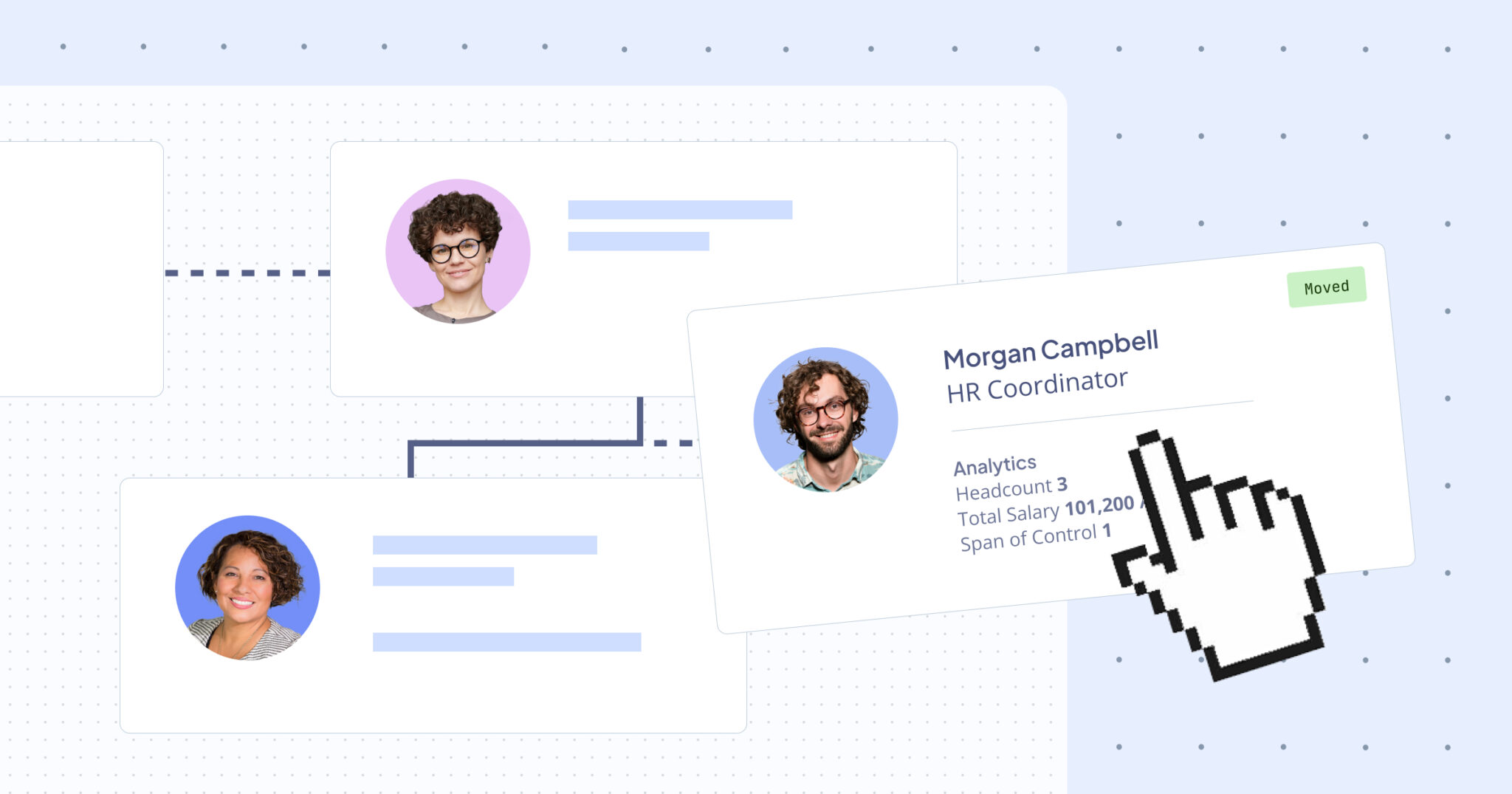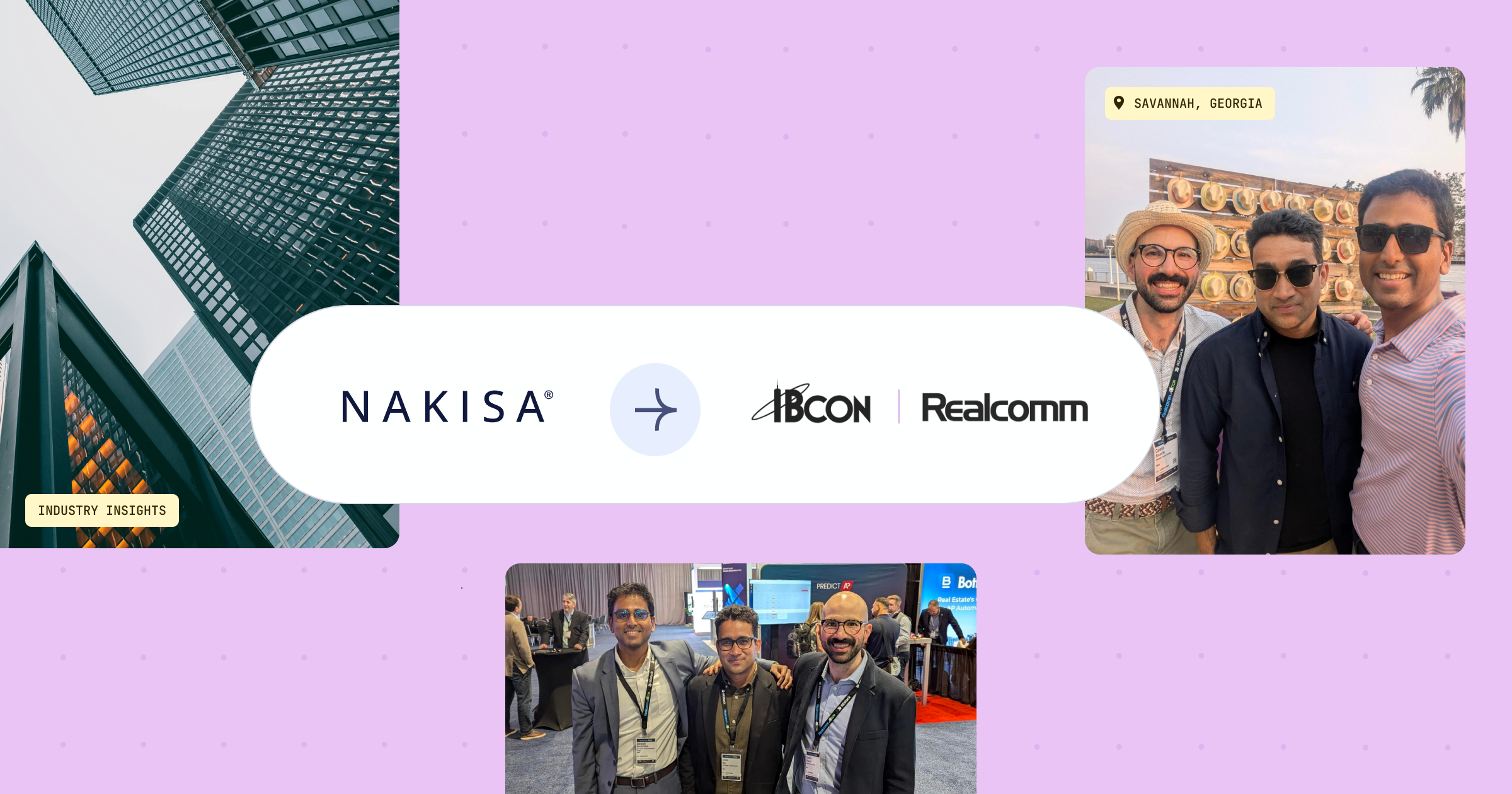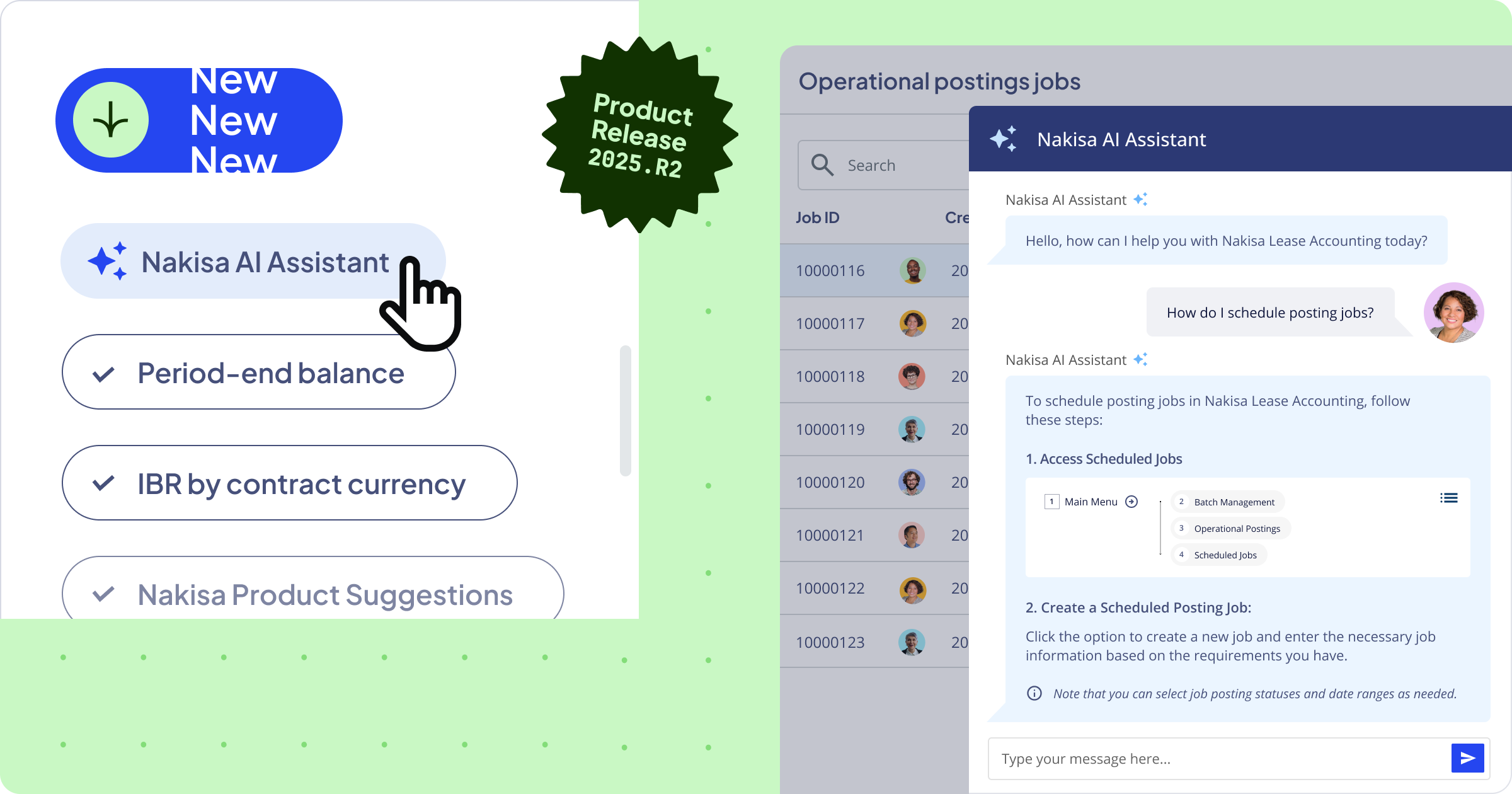What is ERP Integration and why is it important in lease accounting?
At its core, ERP integration refers to the process of connecting different systems and applications within an organization to ERP software, creating a unified data environment. This integration enables various business functions—such as finance, human resources, supply chain management, and, importantly, lease accounting—to share data seamlessly, reducing silos and improving efficiency. Let’s explore the importance of ERP integration in lease accounting software.

In lease accounting, ERP integration specifically involves linking lease management software with an organization's ERP system. This connection enables the automatic transfer of data between systems, ensuring that lease information is accurately reflected in financial reports, general ledgers, and other critical documents.
When discussing the reliability and integrity of data exchanged between lease accounting systems and ERP solutions, it's essential to consider ACID compliance—Atomicity, Consistency, Isolation, and Durability. ACID compliance guarantees that transactions within the integrated system are processed reliably. For lease accounting, this means that any changes to lease data are executed completely and consistently, protecting against partial updates that could lead to financial discrepancies. This reliability is paramount, particularly in financial reporting and compliance, where accuracy is non-negotiable.
What are the five types of ERP integration in lease accounting?
Understanding the various types of ERP integration is essential for organizations aiming to optimize their lease accounting processes. Each integration method serves a specific purpose, allowing systems to share and manage core master data effectively.
Flat file integrations: This method uses text files in formats like CSV, XML, or JSON for data exchange. While easy to implement, flat file integrations lack real-time synchronization, as data updates occur at scheduled intervals. This can lead to outdated information, affecting data accuracy, consistency, and integrity.
One-way integrations: In this setup, data flows in a single direction, meaning updates in one system don’t get reflected in the other. Over time, this can lead to data inconsistencies.
Point-to-point integrations: This method establishes a direct connection between two systems for a specific purpose. While it can be quick to develop, it often leads to complexity and is not reusable for other applications, creating a “spaghetti architecture” as organizations grow.
API-based integrations: These integrations allow software systems to communicate and interact, facilitating seamless data exchange. This method includes various API subtypes, such as REST, SOAP, and GraphQL, enabling more dynamic and flexible integration options.
Bidirectional integrations: In this method, data changes in one application are automatically reflected in the connected ERP through reusable APIs. This is the preferred method used by Nakisa, as it ensures smooth interactions across interconnected systems.
By understanding these integration types, businesses can lay a solid foundation for seamless communication between their lease accounting software and ERP solutions.
The three ERP integration challenges in lease accounting
Integrating ERP systems with lease accounting solutions is a complex task fraught with several challenges. According to Gartner, over 70% of recently implemented ERP initiatives fail to fully achieve their original business goals, with up to 25% failing catastrophically. This alarming statistic underscores the importance of executing ERP integrations correctly, highlighting that the challenges of multi-ERP integration, data migration and standardization, and compliance across multiple entities require a well-defined strategy and robust execution.
Challenge 1: Complexity of ERP integration projects
The complexity of integration projects in lease accounting cannot be overstated. These initiatives often require coordinating various systems, processes, and data flows, which can be particularly challenging in large organizations with diverse IT environments.
Numerous ERP environments
Integrating lease accounting software with multiple ERP systems can present complex scenarios. For instance, organizations that have accumulated numerous ERP systems due to ongoing acquisitions face significant integration challenges. Each of these systems may have been tailored to specific business needs, resulting in a patchwork of software that complicates effective lease accounting.
The intricacies of such environments demand that lease accounting applications be flexible enough to adapt to different customer scenarios. Many enterprises may not have fully consolidated their systems, and relying on a single ERP can be unrealistic. This complexity necessitates careful planning and execution to ensure seamless data flow between systems.
On-premises and cloud-based ERP solutions
Organizations often grapple with a mix of on-premises and cloud-based ERP solutions. While many are considering cloud migration, this transition is usually a large, time-consuming project. The immediate need for integration means that businesses must ensure accurate asset and liability reporting within their existing systems, especially as compliance standards continue to evolve.
Challenge 2: Data migration and standardization
Integrating lease accounting software with ERP systems presents significant challenges in data migration and standardization. Handling sensitive lease data requires maintaining high data quality throughout the migration process. However, the presence of multiple ERP systems, variations in data formats, and the sheer volume of information can make ensuring data integrity a monumental task.
Data security
The first step in data migration is securing data in transit. As data moves from on-premises ERP systems to a cloud-based lease accounting platform, it must be always protected. Implementing secure encryption and tunneling methods establishes a high-precision encrypted tunnel, ensuring that sensitive financial data is protected during the transfer and minimizing the risk of interception or tampering.
Once the data reaches its destination, securing data at rest is essential. All information must be encrypted on storage drives to protect it from breaches, ensuring that even if an incident occurs, the data remains unusable to unauthorized individuals.
Data quality
Ensuring that migrated data is complete and accurate poses another challenge. Poor-quality data—such as missing cost centers, inaccurate dates, or incomplete contract details—can lead to significant financial reporting issues. With lease accounting standards classifying leased equipment and real estate as right-of-use assets and liabilities, incomplete or inaccurate data can result in miscalculations and reporting errors.
Utilizing data quality tools is essential to overcoming these challenges. These tools can analyze imported data for inconsistencies, missing fields, or other potential errors, allowing users to correct issues before they impact the broader organization. Given the importance of precise financial calculations in lease accounting, these data quality checks are crucial.
By implementing a robust data migration and standardization process, businesses can ensure that the data flowing into their ERP systems is reliable, secure, and compliant with accounting standards. This foundation is vital for seamless integration and maximizing the benefits of ERP integration in lease accounting.
Challenge 3: Ensuring compliance across multiple entities
For global organizations, managing lease accounting across multiple entities presents complex compliance challenges. Each entity may operate under different accounting standards, local regulations, and tax laws, making it difficult to maintain uniformity across the organization. This complexity is magnified in ERP integration projects, where seamless coordination between multiple systems is crucial for accurate financial reporting.
Adapting to multiple accounting standards
A key challenge is adhering to varying accounting standards, such as IFRS 16, ASC 842, or local GAAP, which may apply to different entities. When integrating lease accounting with an ERP system, the solution must accommodate the nuances of these standards and apply the correct accounting treatment based on each entity’s location. Ensuring compliance across multiple entities requires the integration to automatically recognize and adjust to the relevant standards, preventing misreporting or errors that could result in regulatory penalties.
Audit readiness and reporting consistency
When an organization operates with multiple entities, especially across different ERP systems, consolidating lease data for financial reporting can be challenging. Each entity may have its own system with different data structures, formats, or compliance rules. Without a standardized approach to data consolidation, discrepancies can arise, leading to inaccurate reporting and increased audit risks.
ERP integration must enable seamless consolidation of lease data across systems, ensuring standardized and compliant at both the local and corporate levels. Automated workflows and validation tools can ensure that each entity's lease data is accurately reflected in the consolidated financial statements.
As we’ve discussed, integrating lease accounting software with multiple ERP systems presents significant challenges, particularly in complex environments with diverse IT landscapes and compliance needs. Navigating these intricacies requires a robust strategy tailored to each organization’s unique circumstances.
This is where Nakisa’s lease accounting software excels. By leveraging advanced integration capabilities, Nakisa addresses these challenges head-on, ensuring seamless data flow and compliance across varied ERP systems. Let’s delve into how Nakisa’s approach to ERP integration not only simplifies the integration process but also enhances overall lease accounting efficiency.
How does Nakisa Lease Accounting’s ERP integration framework work? A guide for IT administrators and ERP functional leads
We’ve built Nakisa Lease Accounting in collaboration with SAP from the outset ensuring a seamless integration tailored to our client’s needs. Today, our integration capabilities extend beyond SAP to include other leading ERP systems, such as Oracle, making Nakisa a truly versatile platform.
Our integration framework consists of two key components: the Nakisa Cloud Platform (NCP) and the Nakisa Cloud Connector (NCC). Together, they guarantee smooth, scalable, and secure integration with ERP systems.
Approximately 90% of our customer base relies on ERP systems for their financial operations, and our bidirectional native integration ensures that key data flows seamlessly between Nakisa and these systems.
Let’s explore the components of this framework and see how NCP and NCC deliver seamless ERP integration for your lease accounting needs.

Kiersten Sommers
IT Director and S4 Functional Lead at JBS USA
Cloud-native platform and microservices architecture
At the heart of Nakisa’s integration capabilities is the Nakisa Cloud Platform (NCP). The cloud-native platform utilizes a microservices architecture along with modern cloud technologies such as Kubernetes, Kafka, Elasticsearch, Keycloak, and CI/CD frameworks. This approach enables Nakisa to deliver a highly scalable and resilient environment for ERP integration. Let’s explore the main benefits of using a cloud-native platform for ERP integration.

By utilizing Kafka, NCP ensures data parallelism and efficient transaction coordination across multiple services. This distributed streaming platform enables real-time data processing and event-driven communication between microservices, creating seamless and reliable data pipelines. As a result, it enhances performance and responsiveness, which are crucial for enterprise-level ERP integrations.
NCP also integrates natively with ERP systems via the Nakisa Cloud Connector (NCC). While maintaining compatibility with existing ERP configurations, it introduces cloud-to-cloud integration capabilities, such as direct integration with SAP S/4HANA through REST APIs. This functionality offers clients an unprecedented level of flexibility and scalability.
Bidirectional ERP integration
The Nakisa Cloud Connector (NCC) enhances NCP by enabling bidirectional integration with ERP systems such as SAP and Oracle. Through validated REST APIs, NCC creates a secure two-way encrypted channel for data exchange between ERP servers and Nakisa’s cloud platform, using TLS over TCP and eliminating the need for back-channel VPN tunnels.
In SAP environments, NCC uses SAP RFCs to retrieve master data from both ECC and S/4HANA, storing this data in Nakisa’s databases for efficient access. BAPIs are used for posting documents and ensuring seamless writeback to SAP systems. While custom ZBAPIs can be integrated, Nakisa recommends using standard BAPIs for optimal performance and security.
Dana Jircikova
Head of Capital and Financial Investments Reporting, Nestle’s Corporate Financial Reporting Team at Nestle
Cloud integration for on-premises ERP systems
Integrating cloud-based solutions with on-premises ERPs can be a complex process, often requiring extensive consulting and middleware solutions to facilitate communication between systems. This process can be both time-consuming and costly, particularly for companies managing multiple ERP systems. Fortunately, Nakisa’s lease accounting software offers a robust solution to simplify these integrations, significantly reducing the time and expenses.
The Nakisa Cloud Connector uses state-of-the-art engineering practices, enabling seamless integration between cloud-based lease accounting systems and on-premises ERPs. By leveraging secure technologies like Kafka for reliable messaging and Kubernetes for scalability, Nakisa’s connector ensures that all communication between systems is fault-tolerant and highly reliable, eliminating the need for complex middleware solutions.
Daniel Marosi
Manager Amer IT Finance Solutions at Amer Sport
Complex integration scenarios
One of the key strengths of Nakisa Lease Accounting is its ability to manage up to 45 different ERP systems through a single, consolidated instance. Let’s explore how Nakisa achieves that.

Designed with robust APIs and a strong integration strategy, Nakisa effectively manages complex data flows across diverse ERP environments without requiring 45 separate Nakisa instances or middleware. Despite the geographical and technological diversity of these ERPs, Nakisa seamlessly dispatches and coordinates all necessary communications. As a result, enterprises benefit from unified financial disclosures and reporting, even when their ERP systems are decentralized and unconsolidated.
Data security during integration
When handling sensitive financial data in lease accounting, ensuring security is critical throughout the entire integration process. Let’s discuss Nakisa Lease Accounting’s best practices for maintaining data security.

Nakisa prioritizes securing data both in transit and at rest. During data transmission from on-premises ERP systems to Nakisa’s cloud platform, we establish an encrypted tunnel via our cloud connector, ensuring top-level security for data in transit. Our clients can configure encryption levels to safely transfer all sensitive information.
Once the data reaches its destination, encryption at rest protects it on storage drives. Nakisa relies on trusted cloud providers like Amazon AWS and Microsoft Azure, guaranteeing that the data resides within a highly secure and robust infrastructure.
Additional protections, such as role-based access control (RBAC), access control lists (ACLs) and firewall rules, are in place to safeguard data privacy. Nakisa's cloud infrastructure operates within a virtual private cloud, making it inaccessible to the public and limiting exposure to external threats.
Security measures also extend to internal data access. SOC 1 and SOC 2 compliance ensures that Nakisa’s processes restrict data access to authorized personnel only, with customer consent. Regular audits monitor these processes, ensuring that data remains secure and accessible on a need-to-know basis.
IT governance and data quality
Nakisa provides powerful tools for IT governance and control (ITGC), allowing clients to trace any changes made to their data within the system. Comprehensive audit trails record who accessed, modified, or approved data— such as payment processing or contract approvals— ensuring full transparency for IT teams.
Data quality is another significant concern during integration. Lease accounting requires detailed data collection, and any missing information can lead to calculation errors.

Nakisa’s lease accounting software includes advanced data quality tools that enable users to inspect, correct, and validate their data before integration. This ensures that the data being reported is accurate, reliable, and aligned with lease accounting standards.
With real-time analysis and validation checks, Nakisa Lease Accounting identifies potential issues before they affect the organization. By integrating directly with ERP systems, Nakisa maintains data consistency across platforms, ensuring that businesses efficiently meet compliance standards.
Olof Ruhe
Product Owner, Tax and Statutory Reporting at Volvo Car
How does Nakisa Lease Accounting’s ERP integration benefit lease accountants?
Nakisa’s lease accounting software is a modern, cloud-native solution tailored for comprehensive lease accounting and management of all tangible assets such as property, equipment, land, and fleet. It offers robust integration capabilities with ERP systems, ensuring bidirectional native integration that facilitates real-time data synchronization. This functionality is crucial for managing complex lease portfolios efficiently while simplifying disclosure reporting to maintain compliance with evolving standards. Let’s dive deeper into the key benefits of ERP integration for lease accountants.

Lyn Kok
Project and Change Management Lead at NTUC FairPrice
Always up-to-date data for lease accounting operations
With native bidirectional ERP integration, Nakisa minimizes complexity and enhances operational efficiency in lease accounting processes. The platform can read master data, transaction data, and various parameters, including exchange rates and tax codes. By performing direct postings into all relevant ERP modules, Nakisa ensures that lease-related transactions are accurately reflected in the system.
For instance, inception entries for new leases, periodic transactions like payments and accruals, and adjustments for lease modifications flow directly into the General Ledger (GL) without manual intervention. This setup facilitates seamless accounting and reporting, significantly reducing the time and effort typically required for manual data handling.
By leveraging the master data from the ERP system, Nakisa enables organizations to manage the entire lease lifecycle effectively. This includes initial measurements for right-of-use assets, subsequent lease modifications, remeasurements, and complex scenarios such as lease extensions, intercompany asset transfers, or early terminations.
The integration allows for real-time data synchronization between Nakisa and the ERP system. Any changes made to synchronized data in the ERP platform are immediately reflected in Nakisa’s software, ensuring that accounting teams have access to the most accurate and up-to-date information. For example, if an accounting team updates payment terms in the ERP system, those changes are automatically synchronized, eliminating the need for manual updates.
Additionally, postings for accruals, payments, and depreciation to the ERP’s GL occur automatically based on user-defined settings, streamlining the accounting process and enhancing operational efficiency. The Financial Forecasting and Reporting tool provides executives with real-time forecasting and analytics, empowering them to make informed business decisions.

Dini Hadiyanti
Senior Specialist for Business Systems at Trakindo
Simplified disclosure reporting and streamlined compliance
The integration also simplifies disclosure reporting by allowing organizations to generate IFRS 16, ASC 842, and GASB 87-compliant reports directly from Nakisa’s lease accounting solution. Key features include:
Contract-level reporting: Nakisa provides contract-by-contract details for auditability, ensuring maximum transparency in financial disclosures. Users can generate detailed reports that include impairment calculations, abandoned asset identifications, and other required disclosures.
Global lease portfolio aggregation: Nakisa aggregates balances across all lease contracts, making it easy to manage large portfolios. Users can create aggregate financial statements by consolidating real estate, fleet, and equipment lease balances, thereby reducing the risk of misstatements or restatements.
Foreign currency adjustments: Compliance with IAS 21 and ASC 830 standards is ensured by generating reports that include currency translations for leases in foreign jurisdictions, enhancing visibility into multi-currency portfolios.

Christian Rudyanto
Director of Accounting & Reporting at TOMTOM
Mass operations and detailed logs
Nakisa’s lease accounting software is built to manage complex lease portfolios, including real estate, fleet, and equipment leases, where the need for automation and scalability is paramount. Key technical capabilities include:
Mass event management tool: This tool allows users to modify hundreds of contracts simultaneously. It applies changes such as lease modifications, reassessments, and asset transfers at scale. The built-in validation framework ensures the integrity of these operations, flagging and preventing incorrect data from entering the ERP system.
Bulk integration and automation: The platform can perform bulk jobs like posting transactions, running workflows, and remeasuring multiple assets simultaneously. This feature is crucial for organizations managing hundreds or thousands of lease contracts that require frequent updates, saving significant time in the process.
Job posting scheduler and logs: Nakisa’s automated scheduler simplifies month-end close activities by posting accruals, depreciation, and payments automatically to the ERP solution. Detailed logs provide transparency into the posting process, allowing for real-time monitoring and tracking.
Nakisa’s lease accounting software simplifies the challenges of managing complex lease portfolios by leveraging real-time ERP integration. This seamless connection enhances data accuracy, streamlines reporting, and ensures compliance with evolving standards, making it an essential tool for lease accountants handling a variety of assets.

Alanna Bilben
Business Transformation IT RTR Lead at 3M
Final remarks
Looking back on our integration journey at Nakisa, it's fascinating to see how we've evolved to meet the ever-changing needs of businesses in lease accounting. The challenges organizations face today are more complex than ever. However, with Nakisa’s lease accounting solution, we’re turning those challenges into opportunities for growth and efficiency.
Our robust integration capabilities with leading ERP systems empower businesses to manage their lease portfolios with unparalleled accuracy and ease. By leveraging real-time data synchronization and advanced functionalities, we simplify compliance complexities and streamline operations.
At Nakisa, we’re not just providing software; we’re building a future where enterprises can thrive amidst change. As we continue to innovate and enhance our technology, I invite you to get a personalized demo to explore how Nakisa can transform your lease accounting practices and drive operational excellence within your organization. Let’s work together to unlock the full potential of your financial systems.







